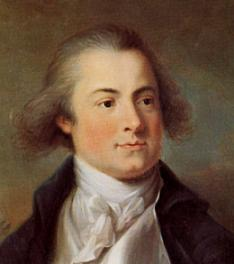There was no question Beethoven would eventually begin writing string quartets. The string quartet had become the most sophisticated form of chamber music, and if Beethoven delayed so long in attacking the string quartet, it was only because he had so much respect for the form.
Joseph Haydn is the composer most responsible for establishing the string quartet as a roughly equal partnership among two violins, viola, and cello. Between 1762 and 1797, Haydn composed 65 string quartets, with another 3 (the last one incomplete) before his death in 1809.
The second major contributor to the string quartet was Mozart, who composed 23 of them between 1770 and 1790, mostly after having heard (and been influenced by) Haydn’s works. In 1785, Mozart dedicated his six Opus 10 string quartets to Haydn.
Lewis Lockwood writes:
> The quartet became a test of compositional ability for young composers, a way of showing their skill in writing idiomatically for four equally important parts with no fillers or patchwork to hide deficiencies in imagination or dull material. — Beethoven, p. 160
Like beer, string quartets often came in six-packs. Haydn published many of his string quartets in groups of six, and Mozart followed the same pattern, as did Luigi Boccherini, who composed more string quartets than Haydn but also usually in packages of six.
In 1798 Beethoven received a commission for six string quartets from patron and skilled amateur musician Prince Joseph Franz Maximilian von Lobkowitz (shown here), who also commissioned six quartets from Haydn. Beethoven finished his set. Haydn did not.

Beethoven numbered the Opus 18 string quartets slightly differently from the order that he composed them, but they will be presented these six days in the common published numerical order. Scholarly consensus is that they were composed in the order 3, 1, 2, 5, 4, 6.
All of Beethoven’s Opus 18 string quartets have a classical four-movement structure established by Haydn and Mozart. Often two fast outer movements surround a slow movement and a movement in minuet-and-trio form, but Beethoven tended to push the envelope.
The first movement of Beethoven’s String Quartet No. 1 is built almost entirely from a six-note rhythmic and melodic motif heard right at the beginning. Building much from little is a technique that Beethoven will come back to in the future.
The second movement of Beethoven’s String Quartet No. 1 is in 9/8 time and labeled “Adagio affettuoso ed appassionato” (slow, affectionate and passionate). It’s one of the great slow movements of early Beethoven, by turns expressing both sweetness and terror.
Beethoven’s friend Karl Ferdinand Amenda later wrote that he told Beethoven that the movement suggested the parting of two lovers, and Beethoven responded that he had been thinking of the burial vault scene in Romeo and Juliet when he wrote it.
Such historical testimony would normally be met with scholarly skepticism, except that Beethoven’s sketches for this movement are accompanied by French phrases that translate as “he comes to the tomb,” “despair,” “he kills himself,” and “the last sighs.”
The third movement of Beethoven’s first String Quartet is labeled as a Scherzo and is unambiguously that, often agitated and unsettling, and whenever the Allegro finale seems about to relax into something more lyrical, Beethoven pulls back and doesn’t allow it.
#Beethoven250 Day 125
String Quartet No. 1 in F Major (Opus 18, No. 1), 1799–1800
The engaging Ariel Quartet is based at the University of Cincinnati.
Beethoven sent an early version of his String Quartet No. 1 to Karl Amenda, with a short note dated 15 June 1799 on the first violin part. Just over two years later, around publication time of Opus 18, Beethoven asked Anenda to keep that version to himself:
Be sure not to hand on to anybody your quartet, in which I have made some drastic alterations. For only now have I learnt how to write quartets; and this you will notice, I fancy, when you receive them. (Beethoven Letters, 1 July 1801)